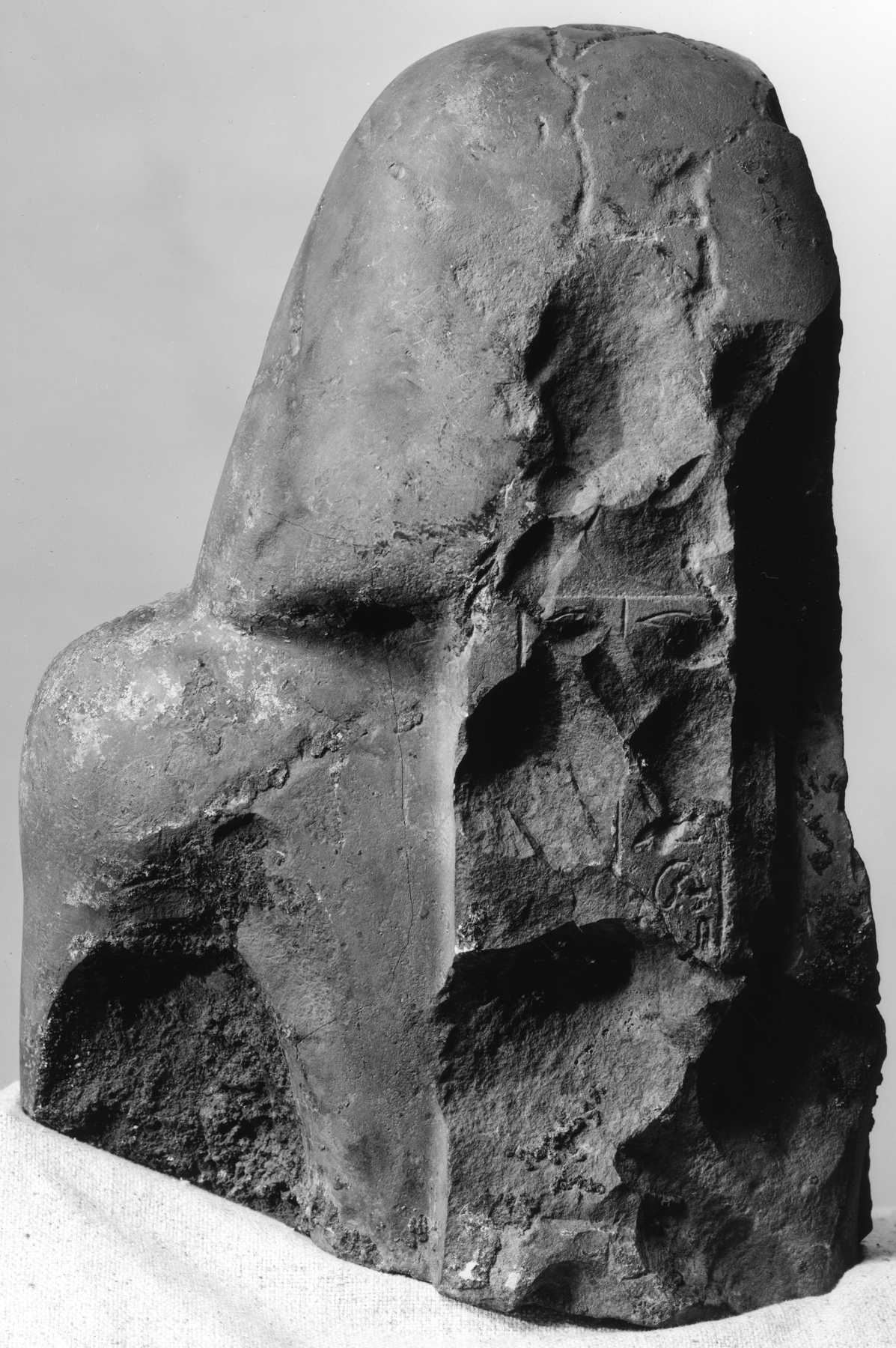Statue of a Man
(Ancient Egypt and Nubia )
The artists of the Kushite rulers of the 25th Dynasty introduced a new realism into royal art and sculpture and also revitalized private sculpture. Kushite images had a broader cheek and stronger jaw, resulting in a more angular face than had been seen before. When the 26th Dynasty supplanted the 25th, the artistic center changed from the residence of the Kushite kings at Napata in southern Nubia, to Sais in Egypt's Delta, home to the new ruling family. The style also changed to a more idealized image with softer features. This early 26th Dynasty sculpture combines the angularity of the larger boned Kushite face with the new idealizing style of the Saite Period, producing a strong and polished image.
Provenance
Provenance (from the French provenir, 'to come from/forth') is the chronology of the ownership, custody, or location of a historical object. Learn more about provenance at the Walters.
Dikran Kelekian, New York and Paris, [date and mode of acquisition unknown]; Henry Walters, Baltimore, 1930, by purchase; Walters Art Museum, 1931, by bequest.
Conservation
| Date | Description | Narrative |
|---|---|---|
| 12/18/1996 | Treatment | microchemical analysis; cleaned; loss compensation; coated |
Geographies
Egypt (Place of Origin)
Measurements
including base: 14 3/16 x 9 7/16 x 22 1/16 in. (36 x 24 x 56 cm)
Credit Line
Acquired by Henry Walters, 1930
Location in Museum
Accession Number
In libraries, galleries, museums, and archives, an accession number is a unique identifier assigned to each object in the collection.
In libraries, galleries, museums, and archives, an accession number is a unique identifier assigned to each object in the collection.
22.418




